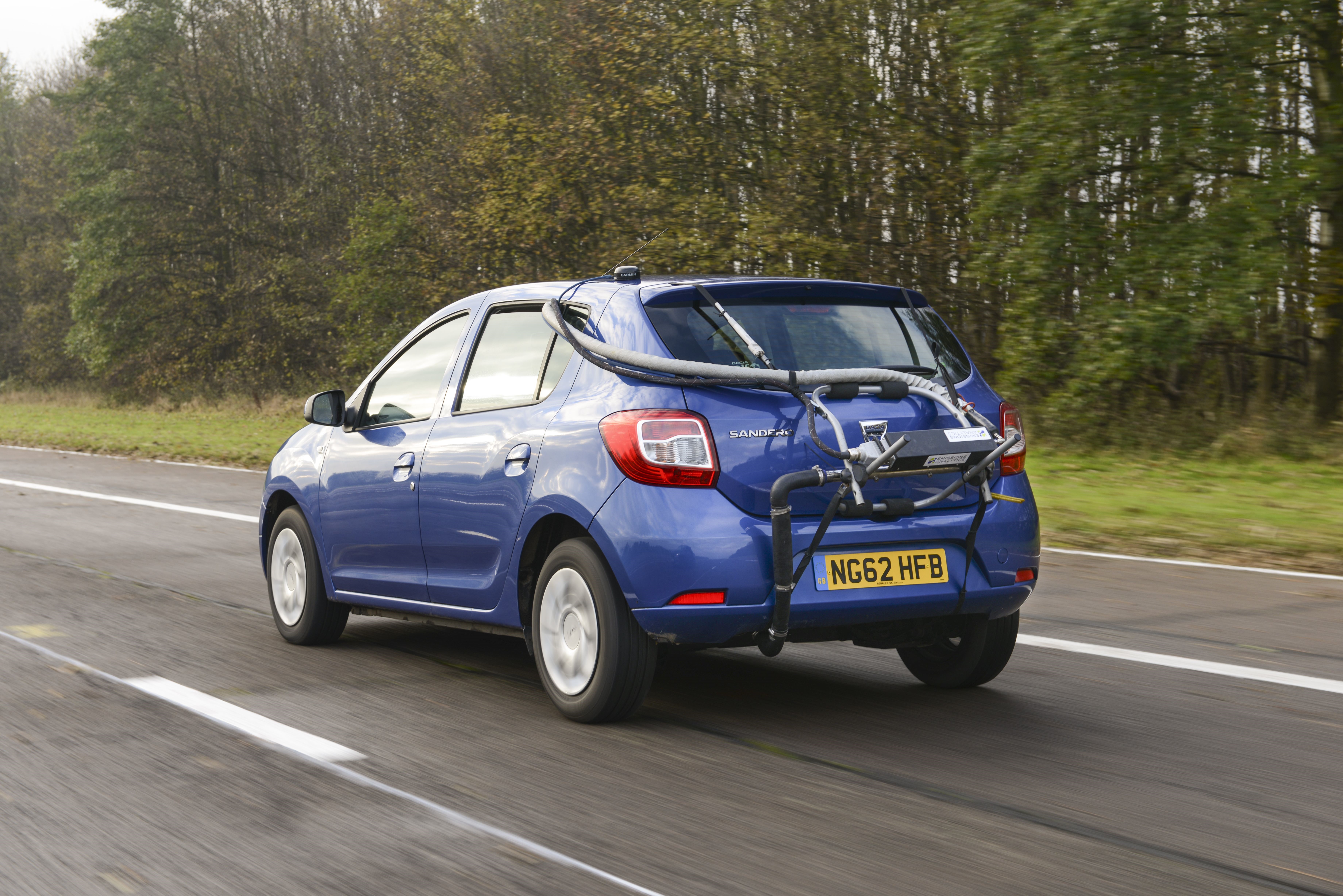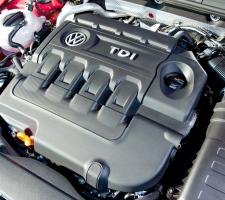
Since the VW emissions story broke in September, emissions testing has come under greater scrutiny, and none more so than in Europe, where critics have long been highlighting the weaknesses of the testing system. Ironically, changes to the emissions testing process were already under review but the story has pushed it up the agenda.
The story is still evolving but so far, some 11 million VW group engines appear to have been fitted with the ‘cheat software’. This detects when a prescribed test cycle is being run and reduces the engine’s performance in order that the emissions limits could be met. When the test is finished the engine performance returns to ‘normal’ - which has the effect of increasing the vehicle’s performance and with it the emissions output. The International Council on Clean Transportation and researchers at West Virginia University are credited with discovering the ‘cheat’ during ‘real-word’ testing. They found the VWs emitted many times the permitted levels of NOx while another make met the standards at all times.
More recently, in response to the US
On 3 November VW also announced that irregularities had been found when determining type approval CO2 levels. This means the stated CO2 emissions, and therefore fuel consumption, data for some models have been set too low. VW said around 800,000 vehicles from across the group could be affected - most are diesel powered but some petrol engines might be included.
The VW debacle has renewed focus on the emissions testing procedures, widely regarded as out of date and unrepresentative – particularly in Europe where up to half of passenger cars are diesel powered. There are also differences in European and US testing procedures as in the US the limits are identical regardless of engine type, whereas in Europe, for Euro-6, diesel engines may emit more NOx (0.08g/km) than petrol engines (0.06g/km).
Just as Europe has recently adopted its most stringent emissions standards, the US is gearing up for a similar change. Currently, the Tier 2 regulation is in use, but this will be replaced by the Tier 3 regulation between 2017 and 2025. Under Tier 2, vehicle manufacturers can choose from 8 different certification “bins” for their vehicles with bin 1 representing zero emissions and bin 8 the highest permitted emissions. There is a range of vehicle categories: Light Duty Vehicle, Light Duty Truck and Medium Duty Passenger Vehicle. Overall, regardless of type and weight, the same limits apply to all vehicles in the same bin.
In Europe passenger cars are differentiated by fuel type, while light commercial vehicles are split into four categories by weight, with different limits for petrol and diesel powered vehicles. Less stringent limits currently apply to most light CVs.
Test cycles also differ. In the US, it’s the Federal Test Procedure and in Europe, the New European Driving Cycle (NEDC). The Federal Test Procedure covers a distance of 17.77km (11.04 miles) through three phases, covering speeds up to 88.5km/h (55mph) with periods of rapid acceleration. For the European Union, the NEDC has two distinct cycles of urban and extra urban driving, featuring slow acceleration but a maximum speed of 120km/h (74.5mph), over a theoretical total distance of 11.02km (6.85 miles).
Similar pollutants are measured: carbon monoxide (CO), NOx, particulate matter (PM), non-methane organic gases (NMOG) - or non-methane hydrocarbons for diesel and formaldehyde for the US. In addition to individual limits, the US EPA also imposes a fleet average value for NOx emissions from each manufacturer of 0.07g/mile (0.043g/km). In service conformity is also required to ensure continued compliance through the vehicle life. Non-methane hydrocarbons / non-methane organic gases are not included in EU testing. A particle number limit was introduced for Euro 5b and remains for Euro 6.
The World Harmonised Light Vehicle Test Cycle and Procedure will replace the NEDC. The European Commission’s plan is to finalise it in time for Euro 6c testing of new type approvals from 1 September 2017. In addition, the EU plans to introduce a real world driving emissions test on road to complement the laboratory testing.
The introduction of real world driving emissions has had the support of European Automobile Manufacturers' Association (
A new compromise was reached between the European Commission’s regulatory committee and member states on 28 October 2015. Real world driving emissions testing must begin from January 2016, but will not become mandatory until September 2017, the original proposed date for introduction.
The compromise will introduce a conformity factor of 2.1, which would allow the on-road emissions to be more than twice the laboratory-tested Euro-6 diesel limit of 0.08g/km. The conformity factor would then be reduced to 1.5 in 2019, meaning vehicles could emit up to 50% more than the limit.
This move has angered some who believe legislators are being lenient towards the manufacturers. However, the ACEA says: “As a direct consequence, a substantial number of diesel models will have to be phased out earlier than planned.” It may also cause manufacturers to switch to selective catalytic reduction (SCR) to control NOx emissions because it offers NOx conversion rates of up to around 95%.
While NOx emissions from light diesels have been the focus since the VW story, the EU has a long-standing programme of reducing CO2 emissions through improved fuel economy.
ACEA believes that ITS could make a significant contribution to reducing CO2 emissions. In September the organisation launched a study by
This found ITS could help in a number of ways with the most potential being for traffic signal co-ordination and parking guidance. CO2 reductions of around 5% are reckoned possible for traffic signals ‘Green Waves’ providing drivers a green light if they approach at a steady speed around 50km/h (31mph).
The report suggests that another 5% CO2 saving could be possible using parking guidance, which could guide a driver direct to available parking spaces.
“Eco-navigation” systems also show a lot of CO2 reducing potential. These feature dynamic navigation tools, using real-time data to help drivers reduce fuel consumption. ACEA suggests that CO2 emissions reductions of around 10% are possible, but acknowledges that the potential is highly variable, depending on the road and journeys, the road topography, traffic conditions and the driver’s knowledge of the route, among other things. A full copy of the ERTICO report is available at <%$Linker:
In the wake of the emissions story, Volkswagen has outlined plans to improve environmental performance including the development of 48-volt micro-hybrid systems, which offer the potential for significant CO2 emissions reductions.
Regenerative braking would be key to fuel saving, according to Schäfer, who says that Delphi has seen CO2 reductions of between seven and 10% with current prototypes, “For the next generation with up to 20kW, we expect that we could increase the CO2 reduction to 15%.”
Compared with the CO2 reduction potential of battery electric cars, Schäfer reckons, “You can reach about 60 – 70% of the targets with around 30% of the cost.” Another advantage is that the 48-volt architecture would include a 12-volt system so that existing components such as light bulbs and wiper motors could still be used. The parallel 12-volt architecture would also provide a failsafe backup for autonomously driven vehicles.
| CO2(g/km / g/mile) | Power (kW/hp) | |
|---|---|---|
| Petrol 3.0litre V6 auto | 198/318 | 250/340 |
| Diesel 3.0litre TDV6 auto | 144/232 | 220/300 |
- About the Author - John Kendall is a freelance journalist, Editor of International Fleet World and a Contributing Editor to Automotive Engineering International






